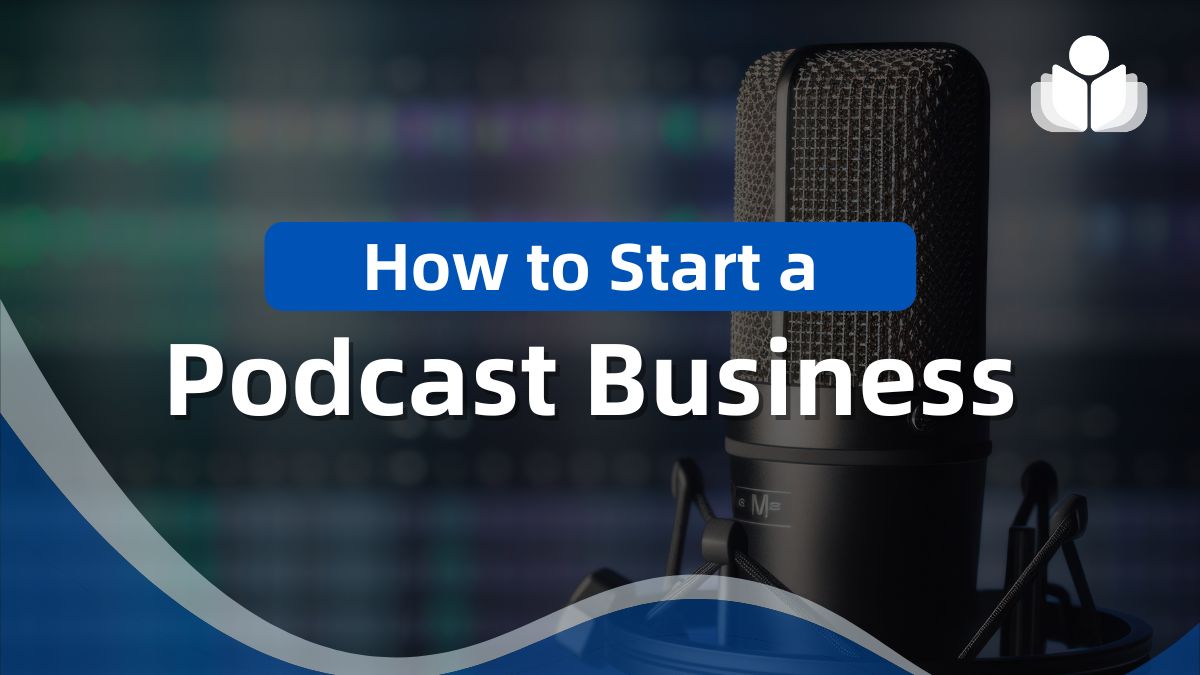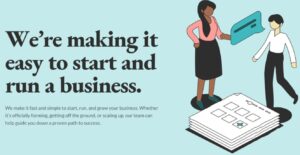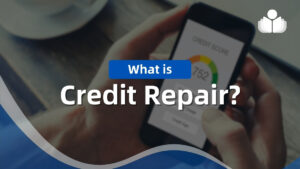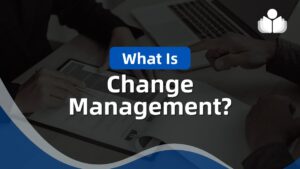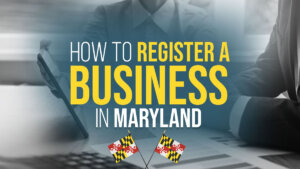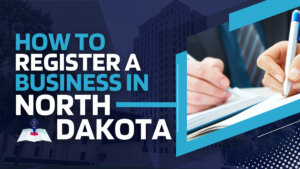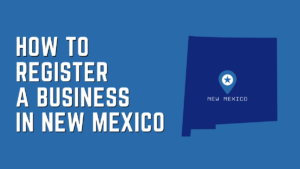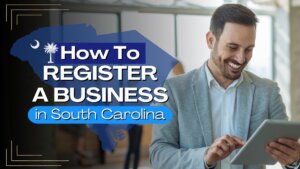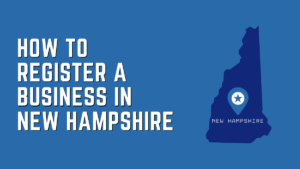Podcasts have emerged as a dynamic digital content platform, providing entertainment and information. This medium allows individuals to share their passions and even venture into entrepreneurship.
Podcasting can be a tool to enhance your professional or commercial profile, unleashing your creative potential while also offering the opportunity to generate income through effective monetization.
In this guide, you’ll learn how to start a podcast from scratch, even if you’re new to technical projects. We’ll provide a comprehensive, step-by-step walkthrough to launch your first podcast. Covering everything from the technical basics to the broader concepts of podcasting, this guide will equip you with all the necessary tools and knowledge to get started.
>> Start a Podcast Business With Tailor Brands >>
What Is a Podcast Business?
At the heart of a podcast business lies the art of storytelling, disseminating knowledge, and sparking engaging discussions that resonate with audiences while managing the commercial aspects that bring these voices to a broader listenership. It’s a harmonious mix of passion and pragmatism, creating content with one hand while navigating the complexities of marketing, monetization, and growth with the other.
This venture demands attention to sound quality and production nuances, promoting content across platforms where listeners congregate and fostering a community where engagement can flourish.
It involves as much listening as speaking, utilizing listener feedback to sculpt the narrative and ensure it resonates deeply. At its best, managing a podcast business blends creative expression with the practicalities of establishing a lasting enterprise, all driven by a passion for connecting, informing, and entertaining.
>> Get Started With Tailor Brands >>
Pros and Cons of Starting a Podcast Business
Pros
- Creative Freedom: Podcasting provides a blank canvas for your creativity. You can delve into topics you’re passionate about, share unique stories, and express your perspective without the constraints typical of traditional media.
- Low Entry Barrier: Starting a podcast is relatively low-cost compared to other media ventures. All you need to begin is some basic recording equipment and a hosting platform to launch your first episode.
- Flexible Schedule: Podcasting offers the flexibility to work at your own pace and according to your own schedule. Whether as a side hustle or a full-time endeavor, you can tailor it to fit your lifestyle.
- Building a Community: More than just creating content, podcasting allows you to cultivate a community of listeners who share your interests. This level of engagement can be extremely fulfilling, both personally and professionally.
- Monetization Opportunities: Successful podcasts offer multiple avenues for monetization, including sponsorships, advertisements, subscriptions, and merchandise sales, potentially turning into a significant income stream.
Cons
- Saturated Market: The ease of starting a podcast also means facing stiff competition. To stand out in a crowded market, you’ll need to put in effort and innovate consistently.
- Time Commitment: Although flexible, podcasting requires significant time for planning, recording, editing, and promoting episodes, particularly if you are committed to producing high-quality content.
- Slow Growth: Cultivating a substantial listener base and achieving financial success usually takes time. Patience and persistence are essential, as immediate results are uncommon in podcasting.
- Technical Learning Curve: For newcomers, mastering the technical aspects of recording, editing, and distributing a podcast can be challenging. It demands a willingness to learn and, in some cases, invest in professional services.
- Ongoing Expenses: While initial startup costs might be minimal, running a podcast involves recurring expenses such as hosting fees, equipment upgrades, and marketing expenses.
How to Start a Podcast Business
Discover how to launch a podcast business with this step-by-step guide, which provides a clear strategy for planning your podcast, publishing it, and expanding your listener base. Follow these steps to get started:
- Develop a podcast concept
- Choose your podcast format
- Pick your podcast name
- Setup podcast equipment
- Choose your podcast software
- Record your first episode
- Edit your audio
- Create podcast artwork
- Set up podcast hosting
- Get listed in podcast directories
- Launch and grow your show
>> Start Using Tailor Brands Now! >>
Step 1: Develop a Podcast Concept
Starting your podcast begins with selecting a theme. This crucial first step includes a “stress test” where you brainstorm at least 20 potential episode ideas. This should include possible discussion topics and potential interviewees if you plan to feature interviews in your podcast.
The importance of this stress test cannot be overstated. If it’s challenging to come up with 20 solid ideas, there’s a significant chance you might exhaust your content reservoir before your podcast even gains momentum. It’s vital to ensure that your theme can sustain long-term interest.
Take inspiration from “The School of Greatness” by Lewis Howes, which has successfully aired over 1,500 episodes. Themes that last are key to a successful podcast.
When choosing your podcast theme, consider whether you will remain passionate and engaged with the topic for years to come. Select a theme that genuinely excites you, as your enthusiasm will be crucial in propelling you forward, especially when faced with challenges.
Once you’ve chosen a theme for your podcast, delve deeper by considering the following questions to refine your concept:
1. What’s the goal of your podcast?
Identify the primary purpose of your podcast. This could generate leads for a business, establish yourself as an authority on a subject, or earn passive income. Knowing your goal will shape the content and structure of your podcast.
2. What’s the ‘why’ behind your podcast?
Combine your practical objectives with a deeper, intrinsic purpose to maintain motivation. What message or mission do you want to convey to your audience? Aligning your podcast with a clear mission will keep you driven and focused.
3. Who is the show for?
Develop a detailed profile of your target audience. Imagine an avatar of your ideal listener to understand their thoughts and feelings better. This helps in crafting content that resonates deeply, addresses their specific needs, and creates a sense of intimacy and connection. Consider their interests, beliefs, and lifestyles to make your content relevant and engaging.
4. How will your show stand out?
Think about what makes your podcast unique and why people would want to discuss and share it. Finding a niche that’s narrow yet deep can significantly reduce competition and make your podcast the go-to in that area. Alternatively, your unique style and personality can be a major differentiator.
5. How will your podcast benefit your listeners?
Aim to provide value that educates and entertains. If you can master the art of creating content that’s both informative and engaging, you’ll cultivate a loyal audience that looks forward to every episode.
Answering these questions thoughtfully can help you craft a podcast that not only meets your goals but also creates a meaningful impact and connection with your audience.
Step 2: Choose Your Podcast Format
The format of your podcast should not only enhance the content but also feel sustainable for you over the long term.
- Reflect on what energizes you the most. Do you thrive on the dynamic of interacting with guests, or do you prefer the focus and control of solo episodes? This preference will significantly influence your format choice.
- If you’re considering co-hosts, aim to keep the group small. A podcasting team of more than two or three people can complicate scheduling and coordination.
- Also, remember that different show formats demand varying levels of production effort. For example, fiction podcasts often involve extensive editing and sound design compared to the typically less intensive production needs of interview podcasts. Select a format that aligns with your resources and energy to maintain consistency and quality in your episodes.
These are some common podcast formats:
- Interview podcasts
- Cohosted podcasts
- Scripted non-fiction
- News recap
- Educational podcasts
- Scripted fiction
Optimal Podcast Episode Length
Create episodes that are only as long as necessary.
Podcast episode lengths vary widely some are under five minutes, while others can be as lengthy as a short audiobook. Below are some of the most typical episode durations:
- Less than 10 minutes (14%)
- 10—20 minutes (15%)
- 20—40 minutes (31%)
- 40—60 minutes (22%)
- Over 60 minutes (7%)
Podcast Publishing Schedule
Podcasting can be either a full-time commitment or a side project. You could choose to release episodes as frequently as daily or as infrequently as every two years, similar to the podcast “Serial.”
We suggest releasing episodes weekly to foster a connection with your audience and establish a routine of regular content production. Here are some of the most common release schedules:
- 0—2 days (7%)
- 3—7 days (36%)
- 8—14 days (39%)
- 15—29 days (17%)
- Over 30 days (1%)
>> Start Using Tailor Brands Now! >>
Step 3: Pick Your Podcast Name
The title of your podcast is crucial, it’s one of the first things potential listeners encounter before even hearing a word of your content. Naturally, choosing the right title is a significant decision.
Once you set up your show on a podcast hosting platform, you’ll input this information, and it’s worth noting that you can modify details like your title, description, and artwork at any time many podcasters do.
It’s normal to feel hesitant about finalizing a show title and moving forward with it. Your title not only reflects your branding but also influences your artwork, how you describe your show, the way you promote it, and much more.
For podcasters who already have an established brand, naming their podcast can be relatively straightforward. Often, the name incorporates the existing brand name along with a descriptor like podcast, radio, show, or another term that distinguishes it as a media production.
Step 4: Setup Podcast Equipment
Now that we’ve established your podcast’s brand, let’s focus on the essential tools you’ll need to get started. Sound quality is critical; if your podcast doesn’t sound good, listeners won’t stick around for long.
Considering that most people listen to podcasts through headphones, poor sound quality isn’t just annoying, it’s downright uncomfortable. Therefore, investing in the right podcast equipment isn’t just beneficial, it’s essential for your podcast’s success.
>> Start Your Podcast Business Now! >>
First up, let’s discuss microphones. There are three main types to consider:
- USB Microphones: USB mics are the most user-friendly, especially for beginners. Simply plug them into your computer’s USB port, launch your recording software, and you’re ready to start recording. They’re generally the most affordable and easiest to use but tend to have inferior sound quality compared to other microphone types.
Popular USB mics include:
- Blue Yeti (best USB microphone overall)
- JLab Talk (best mic for less than $100)
- Blue Snowball iCE (best USB mic on a budget)
- Dynamic Microphones: These microphones are excellent at rejecting background noise, making them ideal for situations where multiple people are speaking, such as interviews or co-hosted shows. They’re also known for their durability and do not require external power, which adds to their convenience. Dynamic mics are commonly used by radio announcers, broadcasters, musicians, and podcasters due to their robust performance in various settings.
One downside to dynamic microphones is their lower sensitivity, which requires you to speak closely to the microphone to maintain consistent recording levels.
Some popular dynamic mics are:
- Shure SM7B
- Electro-Voice RE20
- Heli PR 40
Condenser Microphones: Also referred to as capacitor microphones, condenser mics are celebrated for their outstanding audio quality and high sensitivity. These microphones require 48V phantom power or batteries to function. Due to their heightened sensitivity, condenser mics are best suited for quiet, acoustically treated environments where they can capture sound with precision without interference.
Popular condenser microphones include:
- Rode NT1
- Audio-Technica AT5047
Can You Start a Podcast With Just an iPhone?
Yes, you can record audio on an iPhone since it comes equipped with a built-in microphone. However, the sound quality might need to meet professional standards.
To enhance audio quality, you can use various apps designed to transform your iPhone into a more effective podcast recording tool. Podcast hosting platforms like Podbean and SoundCloud also provide in-app recording features that are tailored for podcast production.
Many of these apps are available for Android devices, too:
- Spreaker (iOS and Android)
- iRig Recorder (iOS and Android)
Step 5: Choose Your Podcast Software
After setting up your hardware, you’ll need recording and sound editing software to proceed. While Zoom is a popular choice for some, there are various other software options available that can also facilitate recording.
Audio Recording Software
The software recommended here enables you to record audio from your microphone and save it in MP3 format. Additionally, these tools provide editing capabilities to refine your recordings.
- Adobe Audition (PC/Mac; $22.99 per month): If you’re looking for powerful podcast editing software with comprehensive features, Adobe Audition is a top choice. It may offer more functionality than you initially need, but if you’re working with a mixer and high-end equipment, Adobe Audition is worth considering.
- Audacity (PC/Mac; Free): Audacity is an excellent free alternative to paid premium audio editing software. It’s user-friendly, and there is a wealth of tutorials available online to help you master its use.
- GarageBand (Mac; Free): Included with all MacBooks, GarageBand is sufficient for most audio editing needs. It allows you to record audio directly from your podcast microphone and save it as an MP3 file.
>> Start Your Podcast Business Now! >>
Step 6: Record Your First Episode
Preparing to record your episode involves a few key steps. Here are three important actions to take beforehand to ensure a successful recording session.
- Create a Podcast Outline
Many new podcasters tend to ramble, but you can combat this by writing a script or outline. Even a simple list of bullet points can significantly improve the flow of your episode. If you have a co-host, collaborate on the outline to ensure both of you are on the same page.
- Choose an Optimal Recording Environment
Aim to record in a quiet room that’s well furnished with curtains, rugs, or carpet to help dampen sound. Hard, flat surfaces can cause sound to bounce around, creating echoes, so try to minimize these in your recording space. For better acoustics, consider adding foam panels to the walls.
- Set Up Your Recording Equipment and Software
Connect your microphone to your recording device. For USB mics, plug the cable directly into your computer’s USB port. If using multiple mics, route them through an audio interface connected to your computer. For XLR mics, connect them to a USB interface or an external audio recorder like the Podtrak P4. After everything is connected, adjust your audio software settings to select the correct audio input.
Microphone Technique
For the clearest audio quality, position your mouth about 2″ to 4″ away from the microphone, though the optimal distance can vary depending on the type of microphone you use. If you encounter issues with plosives (like popping sounds on “P” and “B” sounds) or harsh sibilance (sharp “S” sounds), a simple fix is to adjust your position relative to the microphone.
Instead of speaking directly into the microphone, set it up slightly to the side and angle it toward your mouth. This positioning helps prevent direct air bursts from hitting the microphone’s capsule, leading to a more natural sound in your recordings.
Record Test Track
Experiment by recording yourself speaking at a steady volume from different angles and distances around your microphone. Afterwards, review the recordings to identify which position yielded the best audio quality.
Ignore any mistakes, stammers, or silent pauses for now. You’ll have the opportunity to correct these in the editing phase.
>> Get Started With Tailor Brands >>
Step 7: Edit Your Audio
Podcast editing mainly involves enhancing the audio quality and making fundamental structural adjustments. It’s crucial to simplify the process to avoid feeling overwhelmed. Here are four tips to help you efficiently manage your editing workflow:
- Craft a Captivating Intro and Outro
Your podcast intro should clearly communicate what your show is about and the value it offers, effectively engaging listeners right from the start. A compelling intro can hook your audience and encourage them to listen through the entire episode.
For your intro and outro music, consider these options for royalty-free tracks or purchase custom tunes:
- Soundstripe
- Audio Jungle
- Storyblocks
- Edit Content First, Then Distractions
On your first editing pass, focus on refining the content. Address structural issues or unnecessary segments before tackling technical audio concerns like noise. This approach saves time polishing sections that you might end up removing.
- Smooth Transitions with Fades
Cutting audio can sometimes result in pops or clicks in your final output. To avoid these unwanted noises, use the fade tool at the start and end of your audio clips whenever you make cuts.
- Use a Punch-List for Efficiency
To streamline the editing process, especially if you prefer not to listen to the entire episode multiple times, create a punch list of specific audio distractions to address on your second pass. This list helps you focus on fixing each item efficiently without having to review the entire content repeatedly.
>> Launch a Podcast, Grow Your Brand! >>
Step 8: Create Podcast Artwork
Your podcast will definitely require cover artwork, and it could also benefit significantly from incorporating music. These elements not only enhance the aesthetic appeal but also contribute to the overall branding and listener experience of your podcast.
Creating Podcast Artwork
Your podcast will need distinctive artwork a square image that symbolizes your show. Despite being primarily an auditory medium, the visual representation of your podcast plays a crucial role.
Firstly, this artwork is what potential listeners will see in podcast directories even before they hear your content or read the description of your show. It acts as the first impression of your podcast and competes for attention among countless others in the directory.
For platforms like Apple Podcasts, having an eye-catching podcast image can significantly enhance your chances of being featured in prominent sections like “New & Noteworthy” and “What’s Hot” within your show’s category, increasing visibility.
Moreover, your artwork appears on listeners’ media players both on computers and mobile devices while they tune into your episodes. This visual element is key for reinforcing your brand identity and maintaining a consistent presence across different platforms where your podcast is available.
Podcast Artwork Specifications
The specifications for the Apple Podcast image are periodically updated. Here are the details from the latest update:
Size: The image must be square and can range from 1400 x 1400 pixels to 3000 x 3000 pixels if you’re submitting your show via RSS feed. Apple Podcasts prefers the largest size, which is 3000 x 3000 pixels. File type: The image should be in JPEG or PNG format.
Here are additional tips to enhance your podcast artwork and make it more effective:
- Research Existing Artwork: Visit Apple Podcasts or any other podcast directory and explore podcasts in categories where you might categorize your own. Observe the types of artwork present. Note what catches your eye, what stands out, and what elements inspire you.
- Design for Small Displays: Although the recommended size for podcast images is large (3000 x 3000 pixels), remember that many listeners will discover your podcast on smaller devices. To ensure your artwork looks good on these devices, design with smaller sizes in mind as well. For a practical test, export your artwork at 55 x 55 pixels and check if key elements and details are still visible and impactful.
- Engage Your Audience: If you already have an audience, consider designing several versions of your artwork and soliciting their feedback. This not only involves your audience in the development process increasing their investment in your project but also provides valuable insights into their preferences. Engaging your audience in this way can help build anticipation and support for your podcast even before it launches.
Where can you have impressive artwork made?
Investing in high-quality artwork is crucial as it’s the first visual element associated with your podcast. If you don’t have a personal designer, consider exploring options like 99designs.com or Fiverr.com to find freelance artists. Alternatively, if you prefer to create the artwork yourself, tools like Canva.com offer user-friendly design interfaces tailored for non-designers.
>> Build Your Podcast Business Now! >>
Finding Podcast Music
While there’s no official set of rules for starting a podcast, and certainly no mandate that says you “must have music,” incorporating some bumper music at the beginning and end of your episodes can add a touch of branding and professionalism.
I personally recommend using a bit of music, and you might want to consider adding a voice-over as well, though this shouldn’t deter you from launching your podcast.
A simple 10-second musical piece can suffice on its own. If you opt for a voice-over, aim to keep your intros and outros around 30 seconds to maintain engagement and avoid irritating your listeners as they become regular followers.
Where Can I Find Podcast Music?
There are numerous websites where you can find podcast music that’s safe to use, meaning you won’t risk any copyright infringement issues from the music’s creators.
This music is often labeled as “royalty-free,” “library,” or “stock” music. It can be purchased individually or through subscriptions that provide access to extensive libraries of sounds and tracks.
You can also explore free music options under Creative Commons licensing. However, it’s important to carefully review the terms of each license, as some may not permit commercial use.
If you’re looking for something unique, consider commissioning custom music from platforms like Fiverr or other freelancing sites. But remember, the cost and time involved in custom music should encourage you to start your podcast.
Here are a few places to start your search for podcast music:
- Shutterstock
- Storyblocks
- Envato Elements
>> Launch a Podcast, Grow Your Brand! >>
Step 9: Set Up Podcast Hosting
A frequent misconception about podcasts is that they can be directly uploaded to platforms like Apple Podcasts, Spotify, or Stitcher. In fact, you need a separate hosting service to store your audio files. This hosting service then provides an RSS feed that you submit to these podcast platforms, allowing your podcast to be distributed and accessed by listeners.
Due to this, you use a podcast hosting platform, like:
- Buzzsprout
- Transistor
- PodBean
Once your podcast is hosted, you’ll need to submit an RSS feed. This feed is a standardized method for distributing your content across podcast directories.
The RSS feed automatically ensures that your episodes appear in the designated podcast directories with all the correct metadata, including titles, descriptions, and the appropriate audio files.
If you’re utilizing a hosting platform like Transistor, the process is even more streamlined. You can submit your podcast to all major directories directly from your hosting dashboard, making it a hassle-free procedure.
Step 10: Get Listed in Podcast Directories
Podcast directories, such as Apple Podcasts, serve as centralized hubs where podcast listeners can discover new shows.
Being listed in the top podcast directories is an essential component of your podcast marketing strategy. This is because most new listeners will come across your podcast through these directories, making them crucial for growing your audience.
>> Get Started With Tailor Brands >>
Step 11: Launch and Grow Your Show
Launching your podcast is just the beginning. Once it’s live, the challenge is to make it discoverable to potential listeners. Podcast marketing and increasing findability can be complex topics, but here are some focused strategies you can implement:
- Treat the Launch as a Major Event: Generate excitement around the launch of your podcast. Treat it like a significant event to draw as much attention as possible right from the start.
- Leverage Your Network: This is the time to engage your friends, family, community, audience, and colleagues. Ask for their support openly, it’s a big moment, and you deserve the backing. With their help, your launch can gain considerable momentum.
- Promote Across Your Channels: Use every platform at your disposal social media, email lists, and any groups you’re part of. Pre-announce your podcast to build anticipation, and when you go live, make a big announcement. This strategy helps your launch feel expected rather than sudden.
- Use Social Media Tools: Tools like Repurpose.io and Wavve.co can help you convert audio snippets of your podcast into engaging video content for social media. These snippets make your content more engaging and shareable.
- Engage With Your Audience: During your launch week, make it a point to personally thank for everyone who comments on or interacts with your podcast. Encourage them to leave a review and share the podcast with others who might find it interesting. Engaging with your listeners, no matter how few initially, helps build a community around your podcast and provides valuable feedback for future episodes.
Benefits of Starting Your Own Podcast
Here are several compelling benefits of starting a podcast:
- Reach a New Audience: Podcasting allows you to tap into a different demographic of people who prefer audio content over reading or watching. This can significantly broaden your audience base, attracting those who might not engage with your content in other formats.
- Growing Listener Base: According to Statista, the podcast audience is expected to surpass 100 million listeners by 2028, indicating a strong growth trajectory and a promising opportunity for new podcasters.
- Low Barrier to Entry: You don’t need to be a well-known content creator or have an established blog to succeed in podcasting. Anyone with valuable content and a good delivery can become a successful podcaster.
- Build Authority: Launching a podcast is an effective way to establish and solidify your authority in a particular field. It provides a platform to share your expertise and insights, positioning you as an industry leader.
- Convenience and Accessibility: Podcasts are incredibly convenient and fit easily into people’s busy lifestyles. Listeners can enjoy podcasts while commuting, working out, or performing other tasks, making it a versatile medium for content consumption.
- Cost-Effectiveness: Most podcasts are free to create and free to listen to. This accessibility contributes to their popularity and allows podcasters to distribute their content widely without significant financial investment.
>> Build Your Podcast Business Now! >>
How to Make Money from Your Podcast
Monetizing your podcast effectively involves several steps, with the initial focus on building a strong audience base and earning their trust. Once you have established this foundation, you can explore various monetization strategies.
Here are some common ways to generate revenue from your podcast:
- Sponsorships: This involves promoting a sponsor’s product or service during your podcast episodes. The amount you can earn from sponsorships typically depends on your podcast’s download numbers. Sponsors usually pay based on a cost-per-1,000 listeners (CPM) model, with rates that can range from $18 to $50 CPM.
- Direct Support: You can ask your listeners directly for financial support to help sustain the podcast. Fans who value your content may be willing to contribute, ensuring you can continue producing the podcast.
- Affiliate Sales: Affiliate marketing can be another lucrative avenue. Instead of earning money per download, you earn a commission based on sales generated through your promotional efforts. This requires integrating relevant affiliate links into your podcast or show notes.
- Selling Products: Many podcasters create and sell products related to their podcast content. This could be merchandise like T-shirts and mugs, or services such as consulting, or products like books and courses. Hosting live events is another popular way to engage with your audience while generating income.
Once you’ve launched your podcast and started to grow your listener base, these monetization strategies can help you turn your podcasting efforts into a profitable venture.
Registering Your Business As an LLC
Once your podcast business is established and begins generating revenue, it’s prudent to separate your business finances from your personal ones.
Filing as a Limited Liability Company (LLC) provides significant benefits, the foremost being limited liability protection. This structure legally separates the business from its owners, meaning the personal assets of the LLC members are protected and cannot be used to cover the business’s debts and liabilities. The financial risk to each member is confined to their investment in the business.
To officially register your business as an LLC, you can seek assistance from reputable business registration services, which can streamline the process and ensure compliance with legal requirements. Some recommended services include:
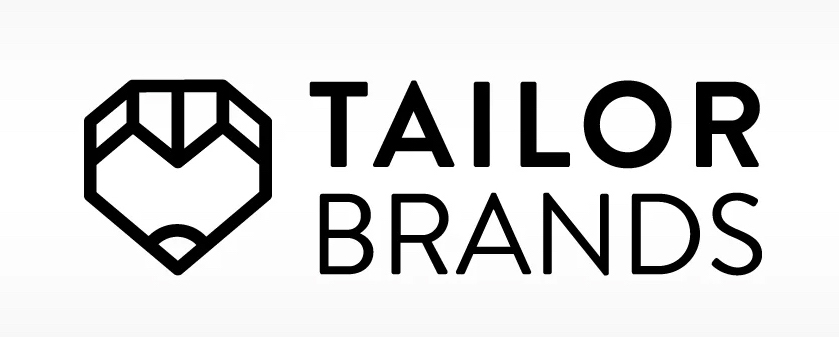
Tailor Brands is an online business registration service designed to help entrepreneurs swiftly and effortlessly register their businesses. The platform offers a user-friendly, step-by-step process that guides users through the necessary legal requirements and paperwork to establish their business as a separate legal entity.
Using Tailor Brands, users can secure a tax ID number, register for any required licenses and permits, and tap into a variety of resources to ensure their business is properly set up for success. This service simplifies the often complex process of business formation, making it more accessible for new business owners.
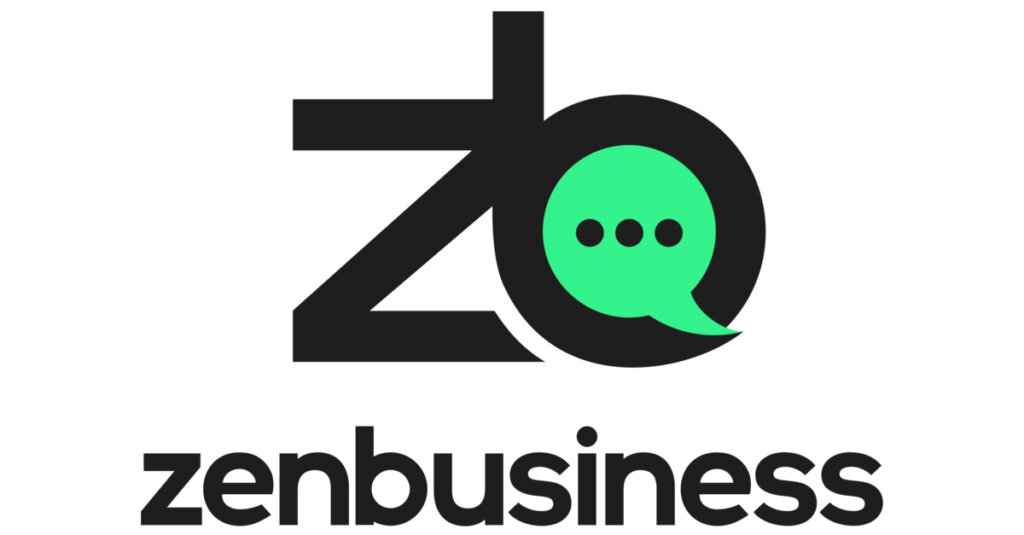
ZenBusiness is highly recommended for its quick business filing options and affordability in handling incorporation tasks. Their customer service is readily available throughout the process to assist with any queries, though it’s important to note that they do not provide legal advice.
Starting a business might seem simple in comparison to maintaining one, which is why ZenBusiness offers tools designed to streamline management tasks. The company can assist with tax document preparation and can act as a registered agent on your behalf, alleviating the need for you to manage these responsibilities directly. This support makes ongoing business management much more manageable.

Northwest Registered Agent stands out as a company registration service known for its commitment to transparency and a customer-first approach.
The service is straightforward about its pricing, avoids hidden fees, and prides itself on providing excellent and readily accessible customer support to ensure things are done correctly on the first attempt.
Additionally, a key focus for Northwest Registered Agent is the security of your private information, emphasizing the protection of your data as a top priority.
Common Misconceptions About Podcasts
Starting a podcast is accessible to anyone, regardless of prior experience or background. Don’t let these common misconceptions deter you from launching your own show:
- You Need a Specific Skill Set: The essential skill for podcasting is the ability to discuss topics you’re passionate about. You don’t need to be an expert in a field, although expertise can enhance your credibility; passion is far more critical.
- You Need Expensive Equipment: Starting a podcast doesn’t require high-end equipment. You can begin with whatever tech you already own, and there are numerous free tools and resources available to help you start.
- Podcasts Are a Dying Medium: Contrary to this myth, podcasts are thriving. The industry continues to grow, attracting significant investment from major media companies like Spotify and Apple, who are eager to capture more listeners and increase revenue.
- You Need a Large Following: While having an established audience can accelerate your initial growth, it’s optional for success. Many successful podcasts have built their audiences from the ground up by consistently delivering compelling content.
- Podcast Episodes Need To Be Long: There is no mandatory length for podcast episodes. The duration should be dictated by your content’s nature and what best suits your audience, whether that’s brief updates or in-depth discussions.
>> Build Your Podcast Business Now! >>
How to Launch Your Podcast Business – FAQs
Bottom Line
You can start creating a successful podcast today. Begin by exploring podcasts on platforms like Apple Podcasts or Spotify that align with your vision. This can give you a sense of what others are doing and help you define your unique angle.
If you already own an external microphone, try recording a brief episode to introduce yourself and your podcast concept. This isn’t just about creating content, it’s about getting comfortable speaking into a microphone for extended periods.
After recording, listen back to your episode. You don’t need to publish this initial recording; it’s more about gaining experience and becoming familiar with the recording process. This practice will help refine your presentation skills and prepare you for future episodes.
 Sections of this topic
Sections of this topic
